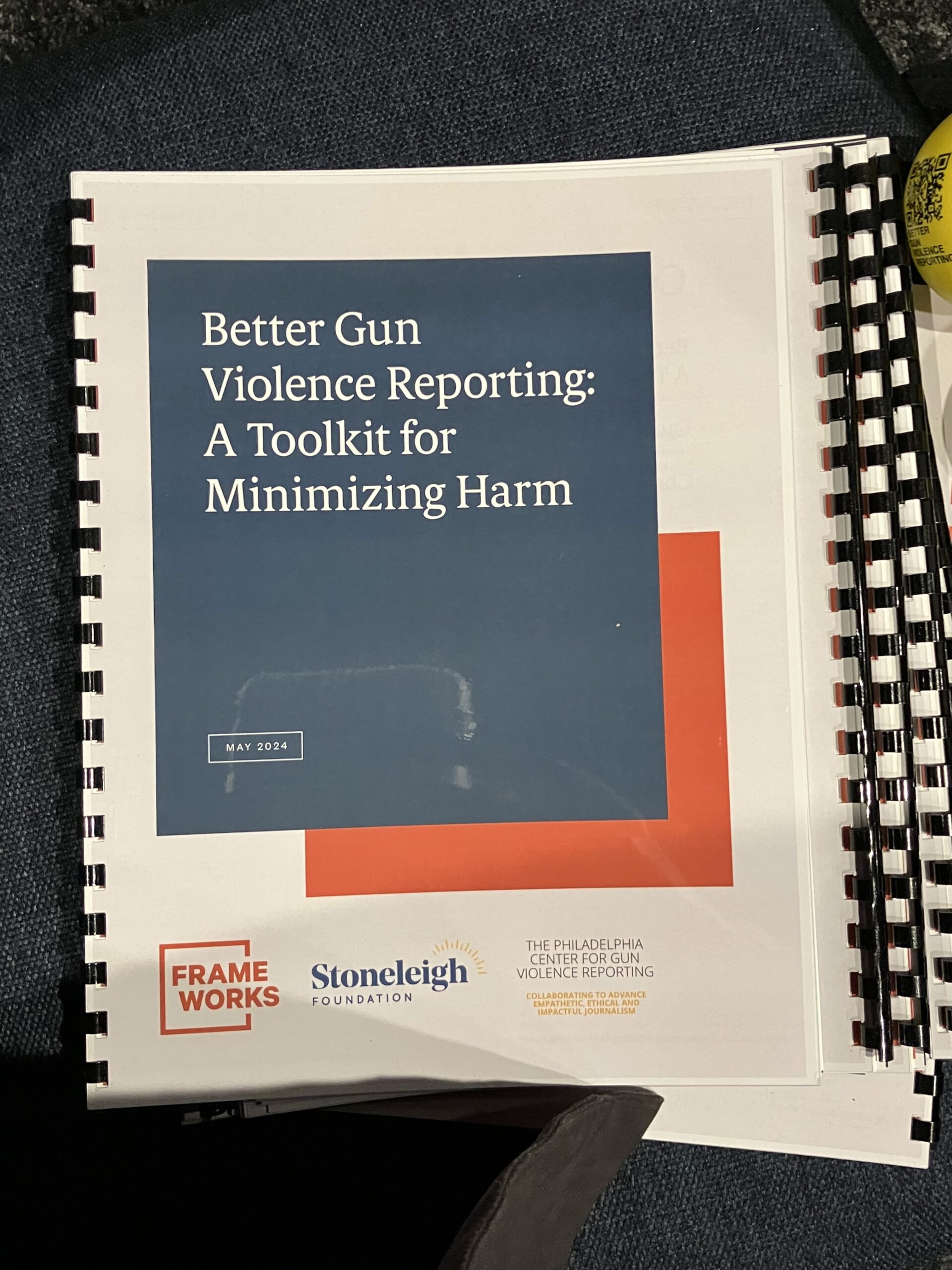Journalists Yvonne Latty and Jim MacMillan spent years racing from one crime scene to the next for the New York Daily News. In retrospect, MacMillan told an audience of NYU students on Feb. 4, he believes that episodic, quick-hit approach is all wrong.
“It’s harmful, it’s dehumanizing, and it has no point,” said MacMillan, a photojournalist who is now director of the groundbreaking Philadelphia Center for Gun Violence Reporting (PCGRV).
He and Latty, a former NYU journalism professor who now heads the Logan Center for Urban Investigative Reporting at Temple University, came to NYU’s Arthur L. Carter Journalism Institute with Oronde McClain, a gun violence survivor-turned-activist who advocates for stronger bridges between journalists and communities affected by shootings.
McClain, Latty and MacMillan aired their short film, The Second Trauma, about the impact of media coverage on gun violence survivors and their families, then fielded questions about how reporters can do a better, more ethical job.
Their overall theme was that coverage is too often reduced to sensational images – yellow police tape, bullet casings, and flashing police lights – and basic information supplied by police sources. After most shootings, reporters never contact family members or survivors before moving on to the next episode of violence. And when journalists do reach out to family members, Latty said, they’re too often rushing for a soundbite.
“A lot of times we come off as insincere because we are so rushed,” she said, “The model should be going into stories with compassion, heart, and humility.”
Latty quoted journalist and author Isabel Wilkerson in calling for “radical empathy”: If you approach reporting with the goal of making survivors like McClain “feel seen and heard,” Latty said, “that’s going to change how you go about your job.”
Even a 30-minute interview with the family of a violence victim, Latty said, can be long enough to learn meaningful details. Reporters should ask open-ended questions about the victim’s life, give family members space to share memories, and really listen to their answers, Latty said. Simply making eye contact, she said, shows grieving sources that you are focused on their stories.
“It’s okay to be human,” Latty said. “It really is.”
McClain, who survived a gunshot to the back of his head when he was 10 years old, told students that reporters can learn much more about communities affected by violence when they follow up after shootings have occurred. Writing stories about healing and recovery, he said, can be a way to build relationships and dispel mistrust of journalists.
Through the gun violence reporting group, McClain leads a project to educate gun violence survivors from neighborhoods all over the city and connect them with journalists. That way, McClain said, when a shooting occurs, reporters can find a source who knows the community and may even be able to help the reporter reach out to potential sources who knew the victim. A journalist who shows up at the door of a family that has just lost a loved one, McClain said, is more likely to win the family’s trust when she is accompanied by a survivor from the neighborhood.
MacMillan said that Philadelphia journalists are already changing the way they cover shootings, citing “healing, solutions-oriented work” by The Philadelphia Inquirer, among other outlets. But MacMillan said he still sees plenty of the breathless, flashing-lights-and-yellow-tape stories that he now regards as pointless and harmful.
“Sometimes students ask me, ‘What would a journalist do in this situation?’” MacMillan said. “I think the question should be, ‘What would a human do?’ You have a feeling in your gut. Listen to it, trust it, follow it.”


